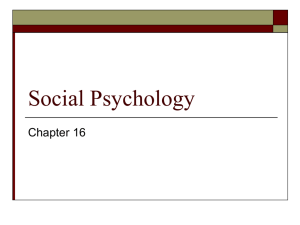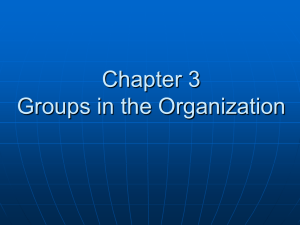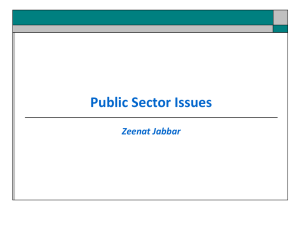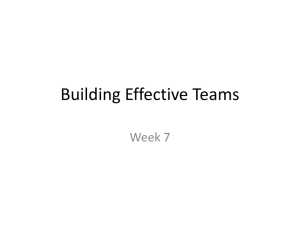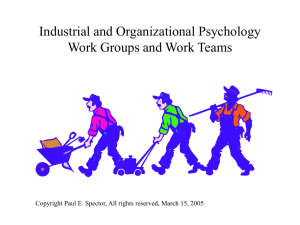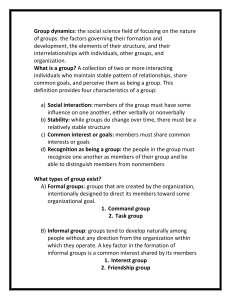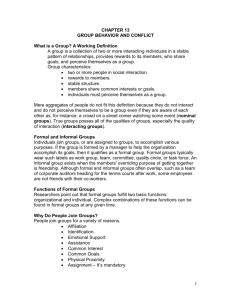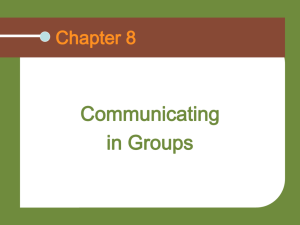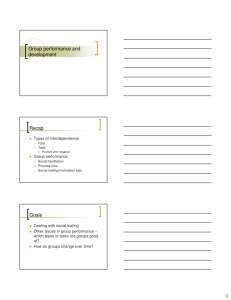Group Dynamics & Work Teams: Key Definitions
advertisement
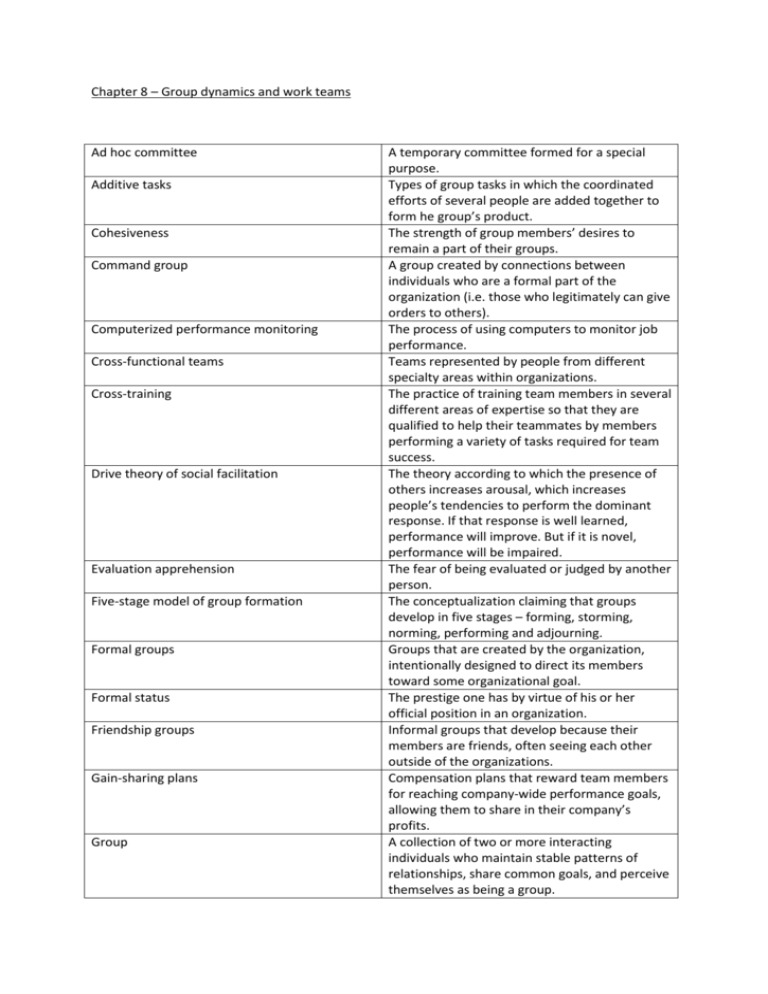
Chapter 8 – Group dynamics and work teams Ad hoc committee Additive tasks Cohesiveness Command group Computerized performance monitoring Cross-functional teams Cross-training Drive theory of social facilitation Evaluation apprehension Five-stage model of group formation Formal groups Formal status Friendship groups Gain-sharing plans Group A temporary committee formed for a special purpose. Types of group tasks in which the coordinated efforts of several people are added together to form he group’s product. The strength of group members’ desires to remain a part of their groups. A group created by connections between individuals who are a formal part of the organization (i.e. those who legitimately can give orders to others). The process of using computers to monitor job performance. Teams represented by people from different specialty areas within organizations. The practice of training team members in several different areas of expertise so that they are qualified to help their teammates by members performing a variety of tasks required for team success. The theory according to which the presence of others increases arousal, which increases people’s tendencies to perform the dominant response. If that response is well learned, performance will improve. But if it is novel, performance will be impaired. The fear of being evaluated or judged by another person. The conceptualization claiming that groups develop in five stages – forming, storming, norming, performing and adjourning. Groups that are created by the organization, intentionally designed to direct its members toward some organizational goal. The prestige one has by virtue of his or her official position in an organization. Informal groups that develop because their members are friends, often seeing each other outside of the organizations. Compensation plans that reward team members for reaching company-wide performance goals, allowing them to share in their company’s profits. A collection of two or more interacting individuals who maintain stable patterns of relationships, share common goals, and perceive themselves as being a group. Group dynamics Group structure Improvement teams Informal groups Informal status Interest group Norms Prescriptive norms Proscriptive norms Punctuated-equilibrium model Relations-oriented role (socioemotional role) Role Role ambiguity Role differentiation Role expectations Role incumbent Self-managed work teams (self-directed teams) Self-oriented role Semi-autonomous work groups Factors governing a group’s formation and development, structure, and interrelationships with individuals, other groups and the organizations within which it exists. The pattern of interrelationships between the individuals constituting a group; the guidelines of group behavior that make group functioning orderly and predictable. Teams whose members are oriented primarily toward the mission of increasing the effectiveness of the processes used by the organization. Groups that develop naturally among people, without any direction form the organization within which they operate. The prestige accorded individuals with certain characteristics that are not formally recognized by the organization. A group of employees who come together to satisfy a common interest. Generally agreed-upon informal rules that guide group-members’ behavior. Expectations within groups regarding what is supposed to be done. Expectations within groups regarding behaviors in which members are not supposed to engage. The conceptualization of group development claiming that groups generally plan their activities during the first half of their time together, and then revise and implement their plans in the second half. The activities of an individual in a group who is supportive and nurturing of other group members and who helps them feel good. The typical behavior that characterizes a person in a specific social context. Confusion arising from not knowing what one is expected to do as the holder of a role. The tendency for various specialized roles to emerge as groups develop. The behaviors expected of someone in a particular role. A person holding a particular role. Teams whose members are permitted to make key decisions about how their work is done. The activities of an individual in a group who focuses on his or her own good, often at the expense of others. Work groups in which employees get to share in the responsibility for decisions with their bosses Shared mental models Skill-based pay Social facilitation Social impact theory Social loafing Standing committees Status Status symbols Task force Task group Task-oriented role Team Team building Virtual teams Work teams and are jointly accountable for their work outcomes. The common understanding that develops between team members regarding how their team operates, including how people are expected to work together and what each particular person is expected to do at any given time. Paying employees not only on the basis of how well they perform but on the breadth of their skills as well. The tendency for the presence of others sometimes to enhance an individual’s performance and at other times to impair it. The theory that explains social loafing in terms of the diffused responsibility for doing what is expected of each member of a group (see social loafing). The larger the size of a group, the less each member is influenced by the social forces acting on the group. The tendency for group members to exert less individual effort on an additive task as the size of the group increases. Committees that are permanent, existing over time. The relative prestige, social position, or rank given to groups or individuals by others. Objects reflecting the position of any individual within an organization’s hierarchy of power. See ad hoc committee. A formal organizational group formed around some specific task. The activities of an individual in a group who, more than anyone else, helps the group reach its goal. A group whose members have complementary skills and are committed to a common purpose or set of performance goals for which they hold themselves mutually accountable. Formal efforts directed toward making teams more effective. Teams that operate across space, time and organizational boundaries, communicating with each other only through electronic technology. Teams whose members are concerned primarily with using the organization’s resources to effectively create its results.
